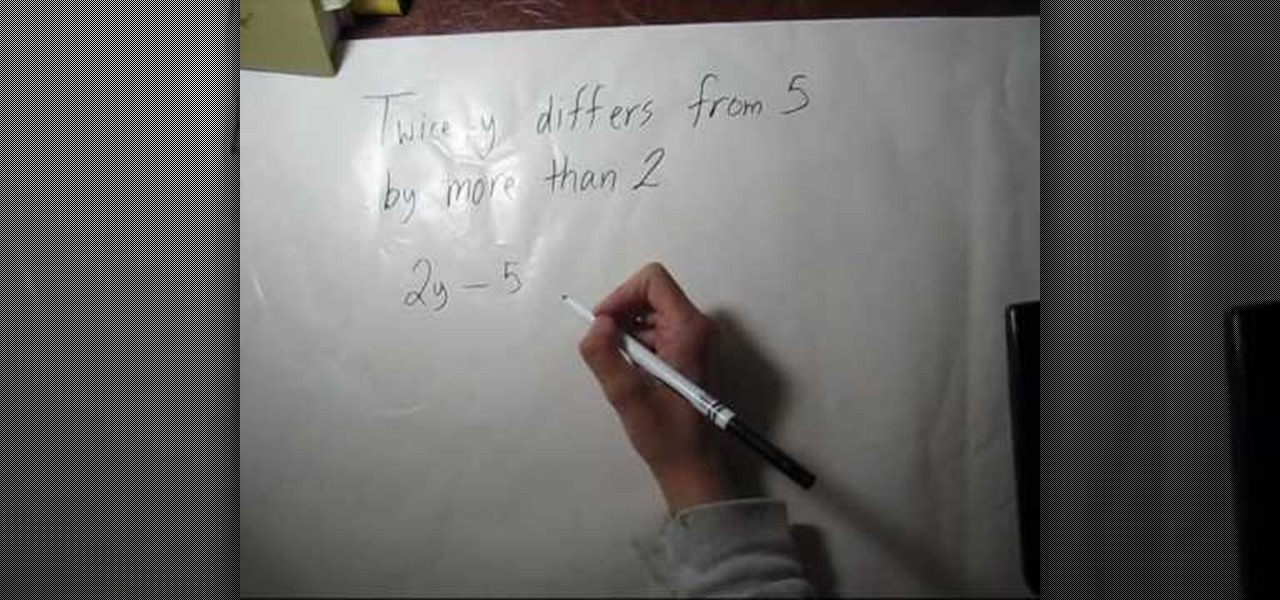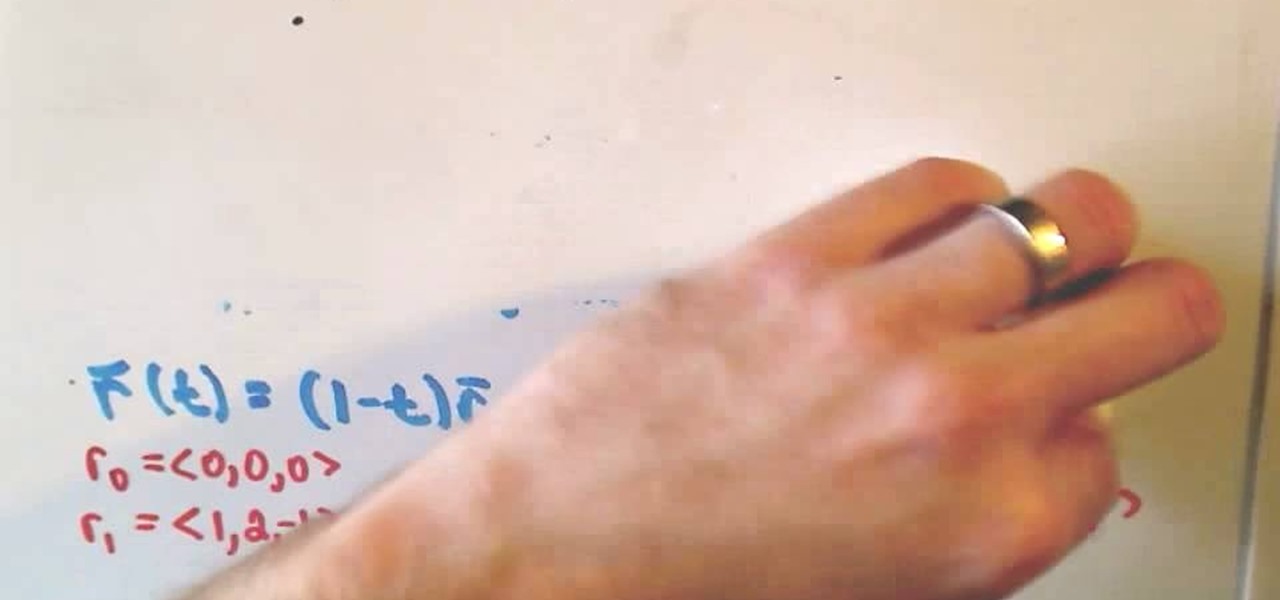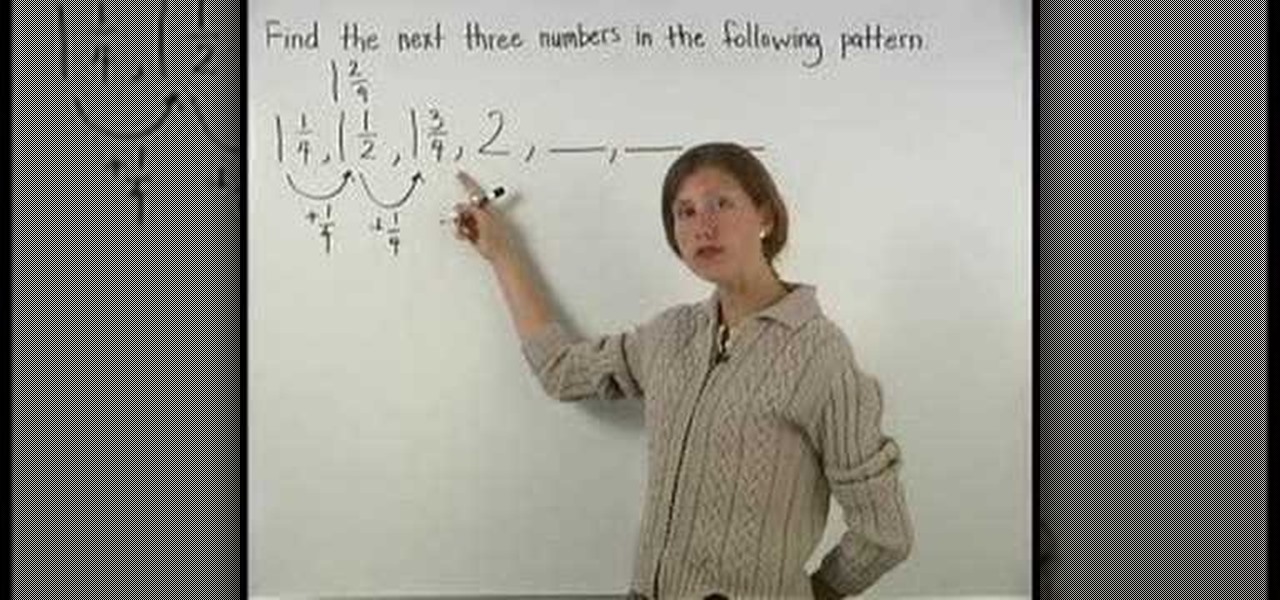
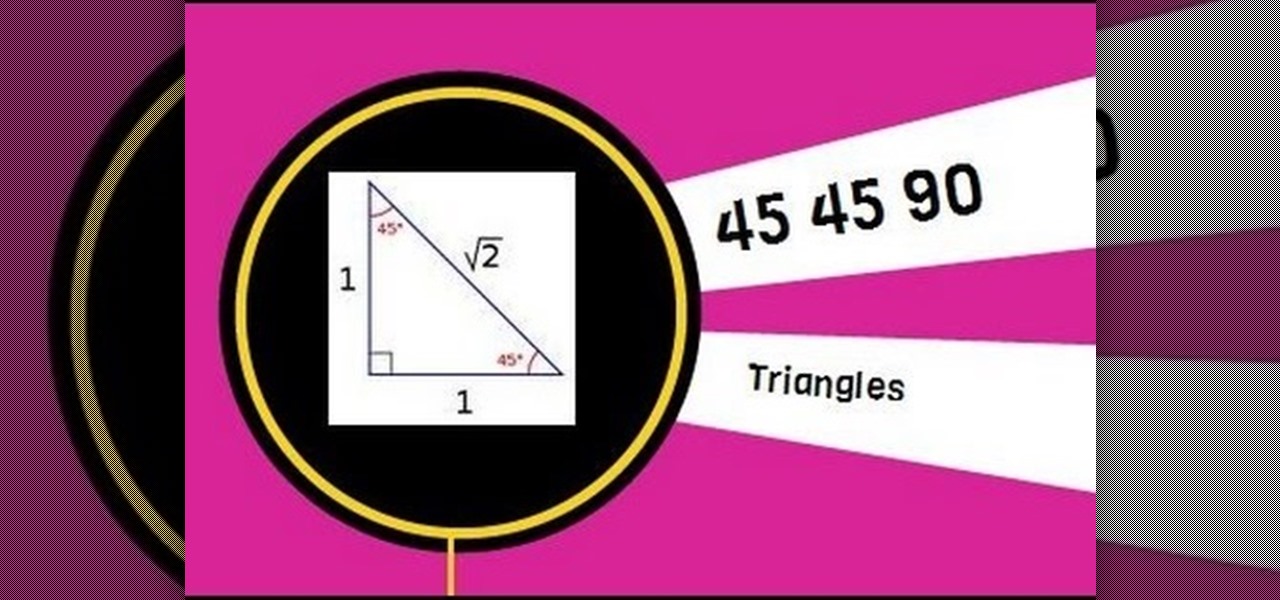
How To: Find Leg Lengths and Hypotenuse of a 45 45 90 Triangle
A 45 45 90 triangle is a special right triangle because you can use short cuts to find leg length and hypotenuse length. This video solves two problems involving leg length and hypotenuse length.
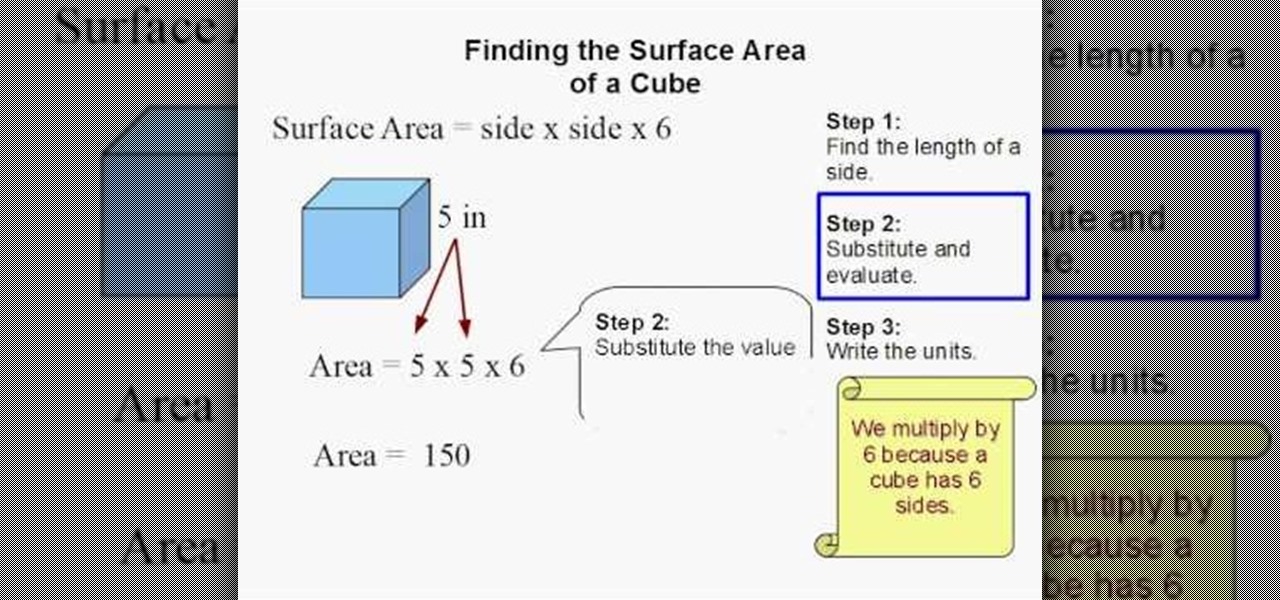
How To: Find the surface area of a cube
In this video, we learn how to find the surface area of a cube. Finding the surface area of a cube is something everyone will have to do in math. The easy formula to figure out this is: surface area= side x side x 6. Your first step to figuring out the problem is to find the length of a side. Once you have found this, you will substitute and evaluate the numbers in the equation. After this, write the units in for the problem. You will then come up with the answer of the equation with the unit...
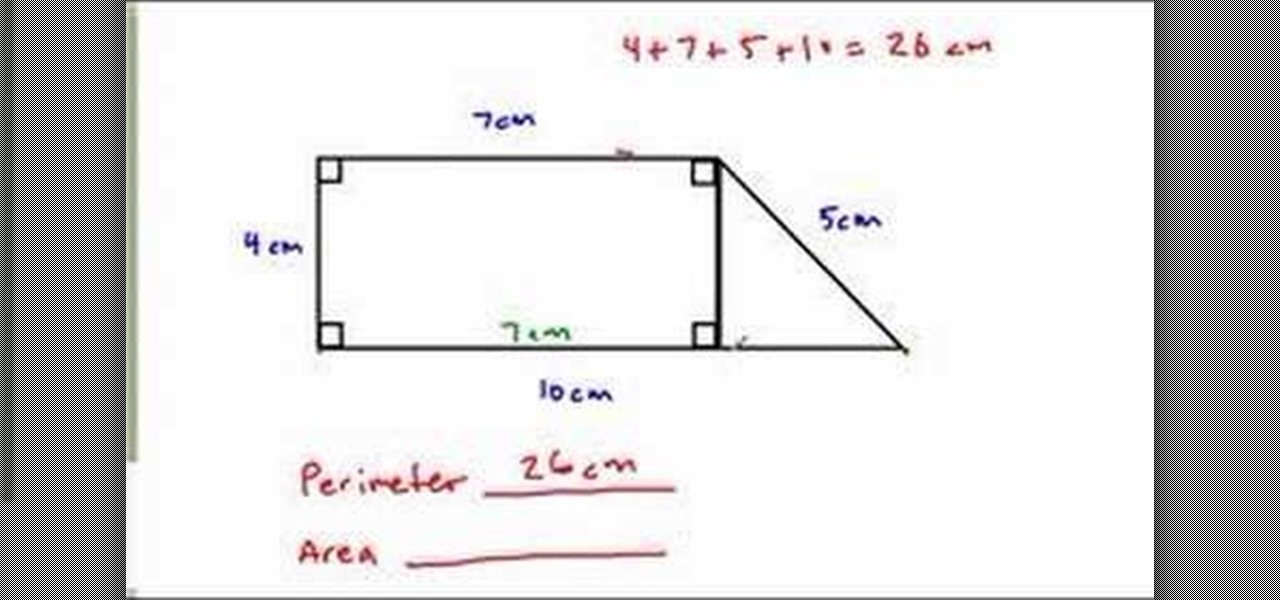
How To: Find the perimeter & area of a complex figure
In this video tutorial the author shows how to find the perimeter and area of a complex figure. He shows that a complex figure can be subdivided into standard geometric figures. In the current example he divides the complex figure into a rectangle and a triangle. Now he computes the perimeter by adding the three sides of the rectangle and the two sides of the triangle. Similarly he computes the individual areas of the rectangle and the triangle and finally adds then up to find the area of the...

How To: Calculate Faster Than a Calculator
When you need to crunch numbers quickly — and I mean really quickly — there's a cool method you can use to multiply two numbers together in just a few seconds.
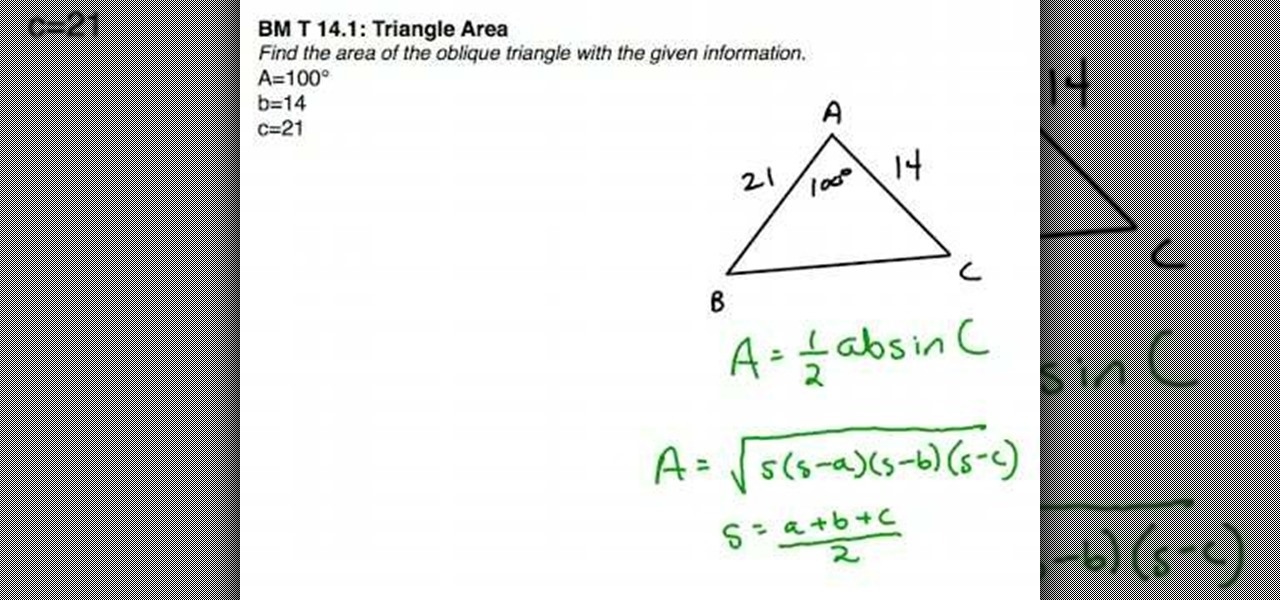
How To: Find the area of an oblique triangle using formulas
In this tutorial the instructor shows how to find the area of an oblique triangle using different formulas. To find the area of an oblique triangle there are different formulae. The first formula to calculate the area of a triangle is area A = (1/2) * a * b * Sin(C), where a and b are the lengths of the two sides of the triangle and C is the value of the angle of the triangle that lies in between the two sides a, b. Now substitute these values in the given formula to find the area if you have...
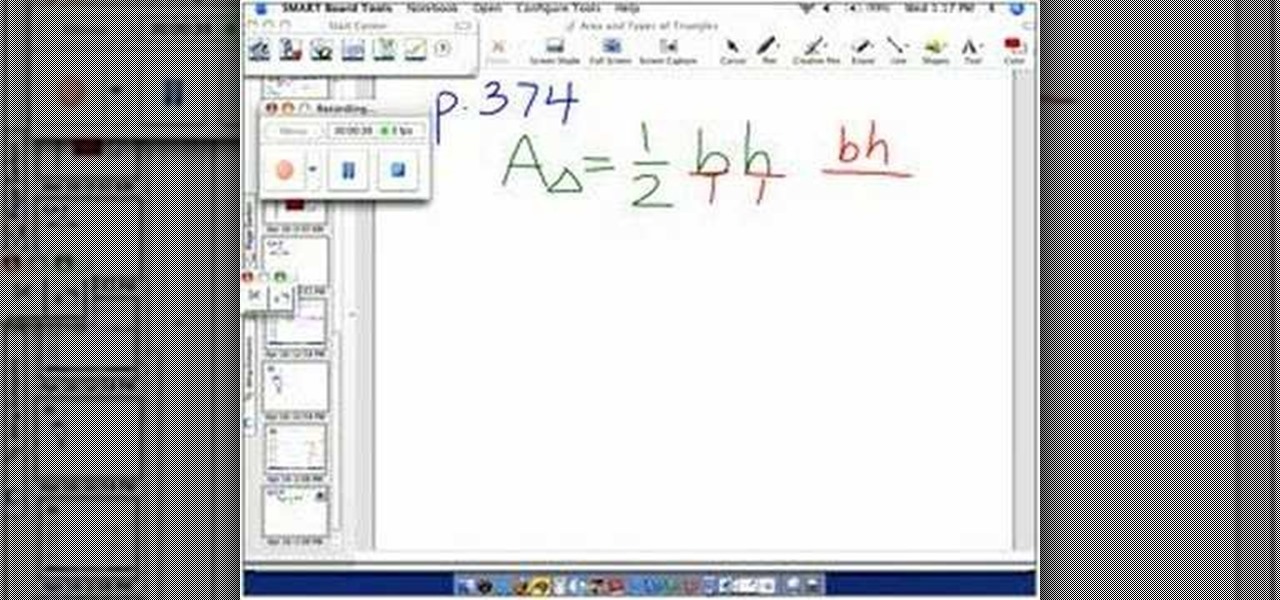
How To: Find the area of triangle using fraction measurement
This video demonstrates the way to find the area of a triangle using fraction measurements. The person presenting this video first writes the actual formula for calculating the area of the triangle. The formula is: the area of the triangle denoted by ‘A’ is equal to half of ‘b’ times ‘h’ where ‘b’ and ‘h’ are the base and height of the triangle, respectively. Now, to make it into fractions, he writes ‘b’ and ‘h’ over ‘1’. Then he asks you to calculate “what is one times ‘b’ times ‘h’” which i...
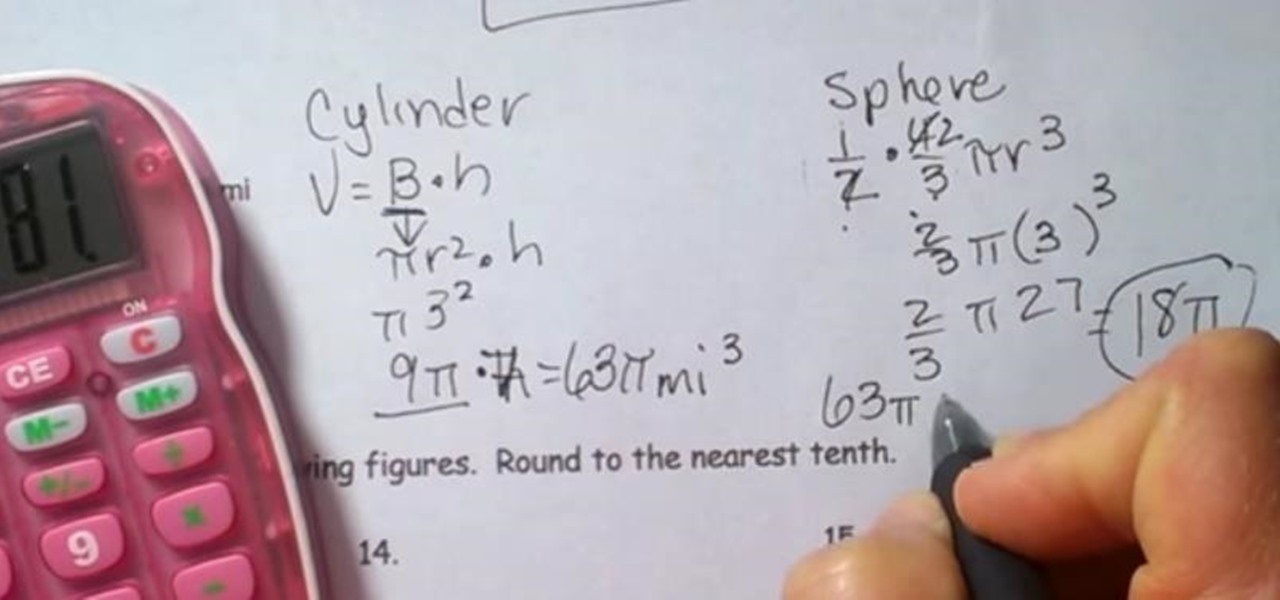
How To: Find the Volume of Composite Figures (Also Called Composite Shapes)
Composite figures are composed of several geometric shapes and are three-dimensional shapes. The first composite shape is a combination of a rectangular prism and a pyramid. To find the volume of the entire shape you find the volume of each individual shape and add them together. The second figure consists of a cylinder and a hemisphere. Check out the video below for the full lesson.

How To: Prove a triangle inscribed in a circle is right angled
When a triangle is inserted in a circle in such a way that one of the side of the triangle is diameter of the circle then the triangle is right triangle. To prove this first draw the figure of a circle. Now draw a diameter to it. It can be any line passing through the center of the circle and touching the sides of it. Now making this as the side of a triangle draw two lines from the ends of the diameter to a point on the circle. Now join the center of the circle to the other vertex of the cir...
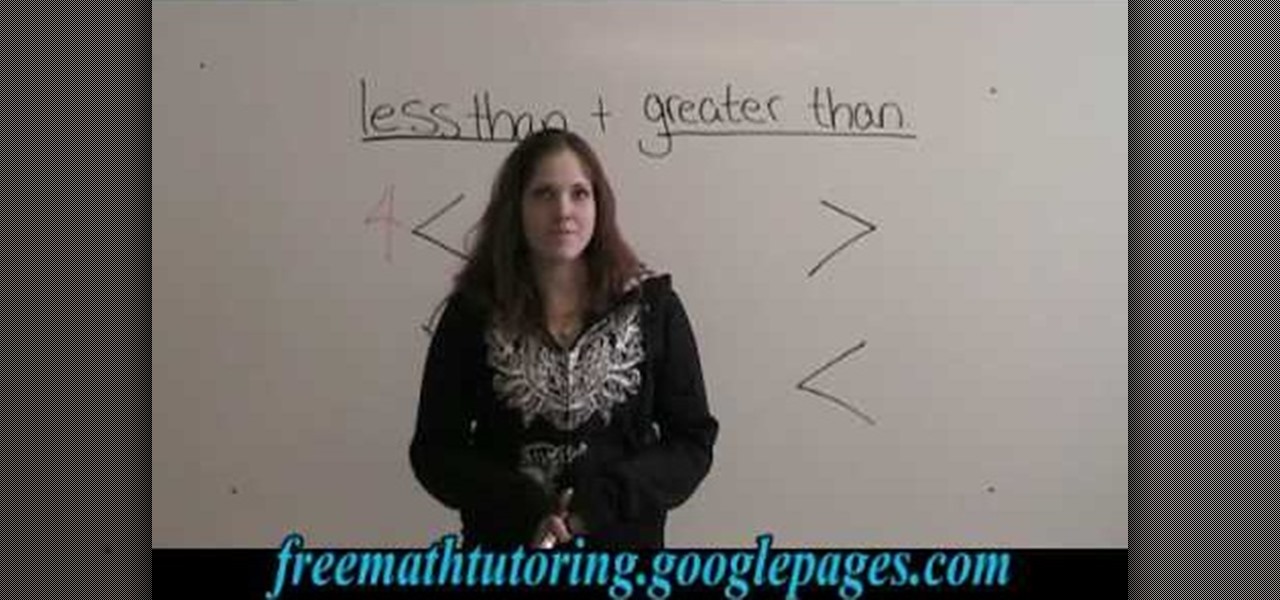
How To: Use ">" (greater than) and "<" (less than) symbols
In this video the author explains how to identify the less than (<) and greater than (>) symbols and when to use them. She explains to us to relate the numbers to animals stating that the smaller numbers are smaller animals and bigger numbers are bigger animals. Now she tells us to imagine that smaller animals are eaten up by the larger animals. So she shows a smaller number comes on the left side of '<' sign and bigger number comes on the right side of '<' sign stating that the bigger number...
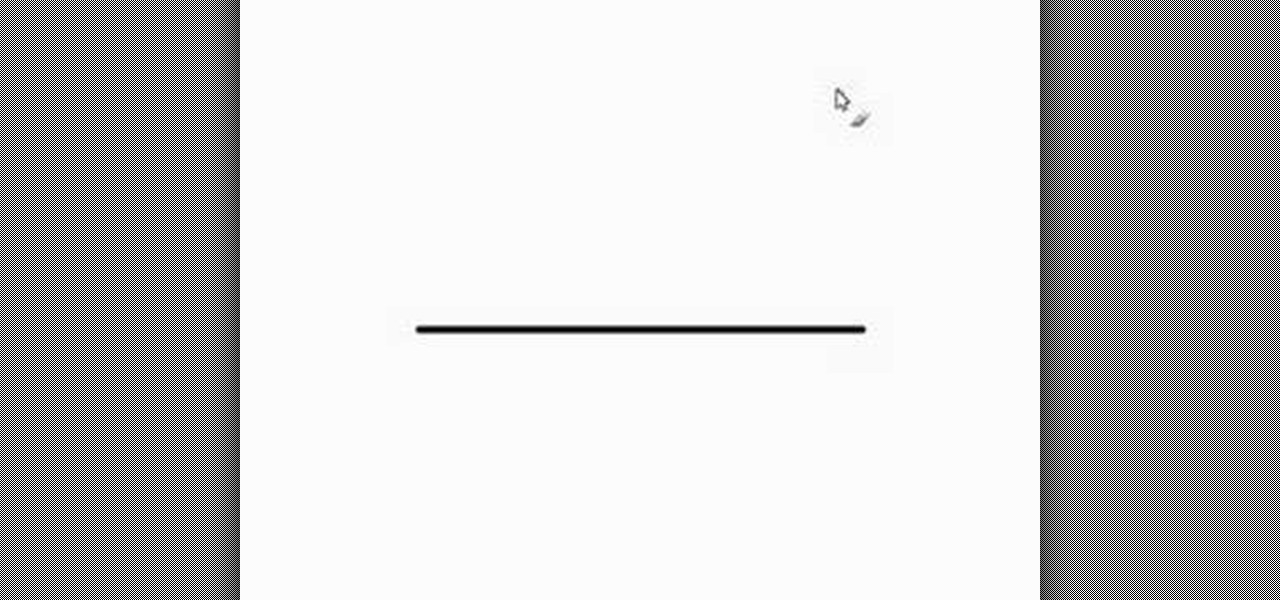
How To: Bisect a line segment
In this tutorial, we learn how to bisect a line segment. First, you need to adjust your compass so the distance from the sharp part and the drawing part is the size of the line. Then, put the sharp part on one side and draw your arc with the pencil. Do this on both sides of the line so your image shows two arcs that intersect each other. Since you have these two intersecting lines, you can draw a line between these to show where the middle of the line would be. Use a ruler to draw this straig...
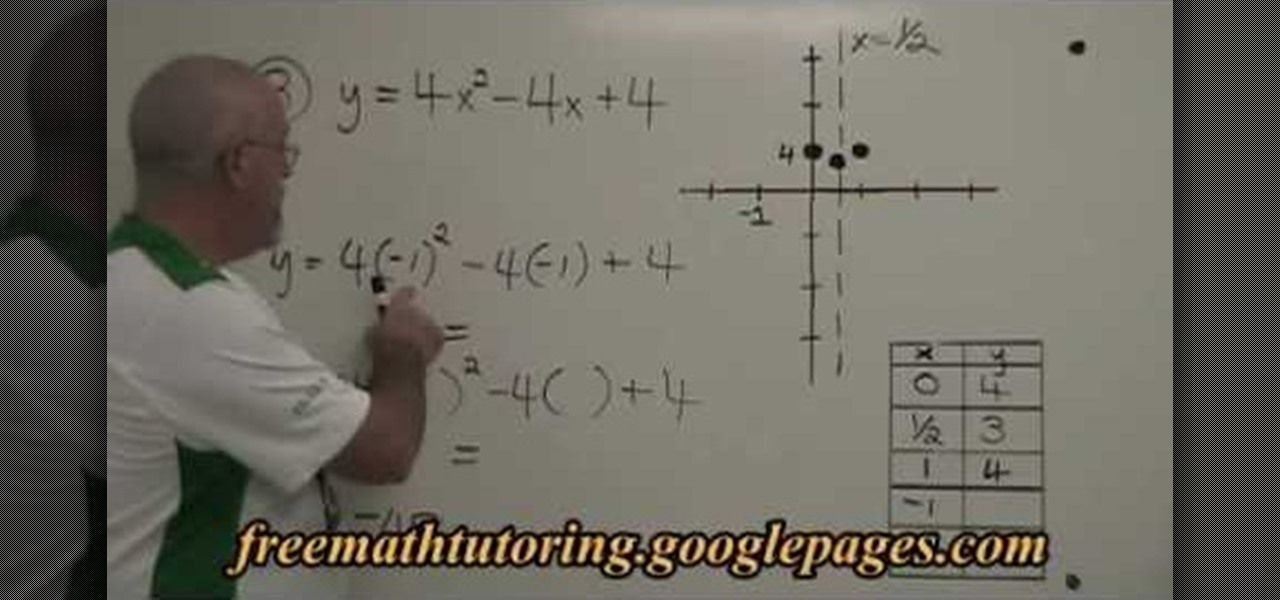
How To: Find extra points for a parabola (quadractic equation)
This is a mathematical educational video on how to find extra points for a parabola. In the first two examples there is no need for finding extra points as they have five points and have zeros of the parabola. In example 3 we need to find extra points. The equation is y=4xsquare-4x+4. You can take x= -1 and get the value for y. You will get a point now. Similarly you can substitute -2 for x in the same equation and get the value for y. Now you get another point. Now you can draw the parabola.
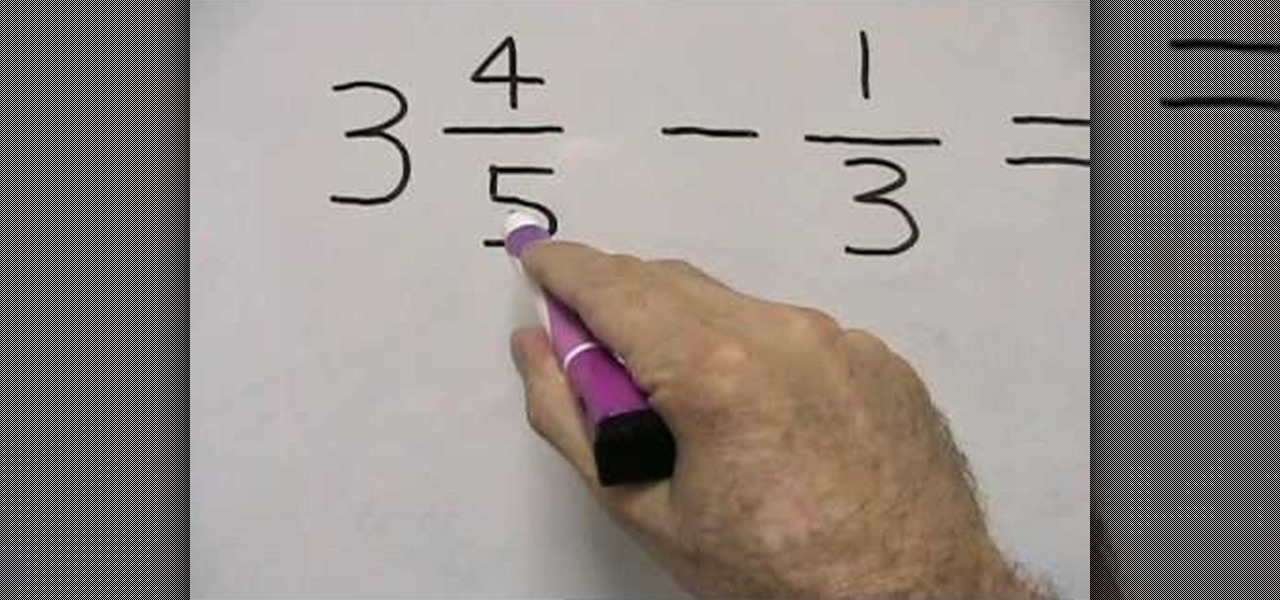
How To: Subtract a mixed number from a proper fraction in basic math
From Ramanujan to calculus co-creator Gottfried Leibniz, many of the world's best and brightest mathematical minds have belonged to autodidacts. And, thanks to the Internet, it's easier than ever to follow in their footsteps. With this free math tutorial, you'll learn how to subtract a mixed number from a fraction in basic arithmetic.
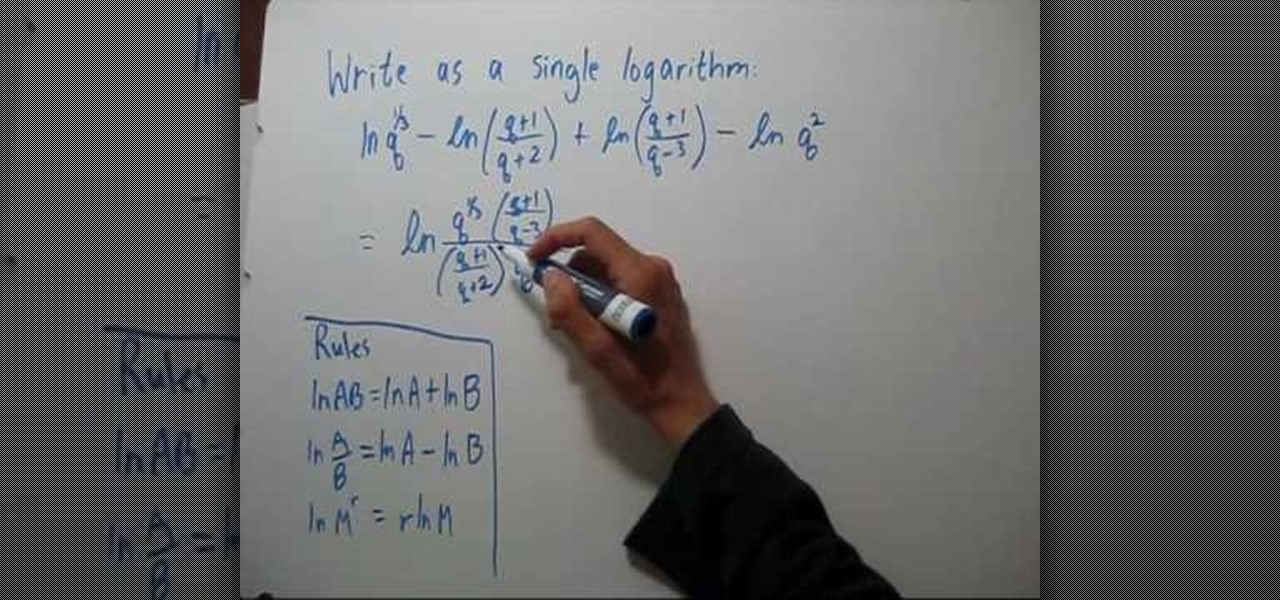
How To: Write a sum/difference of logarithms as a logarithm
To write the sum or difference of logarithms as a single logarithm, you will need to learn a few rules. The rules are ln AB = ln A + ln B. This is the addition rule. The multiplication rule of logarithm states that ln A/b = ln A - ln B. The third rule of logarithms that deals with exponents states that ln (M power r) = r * ln M. Using these three rules you can simplify any expression that involves logarithms to arrive at a single logarithm. The instructor shows how to apply these rules to a f...
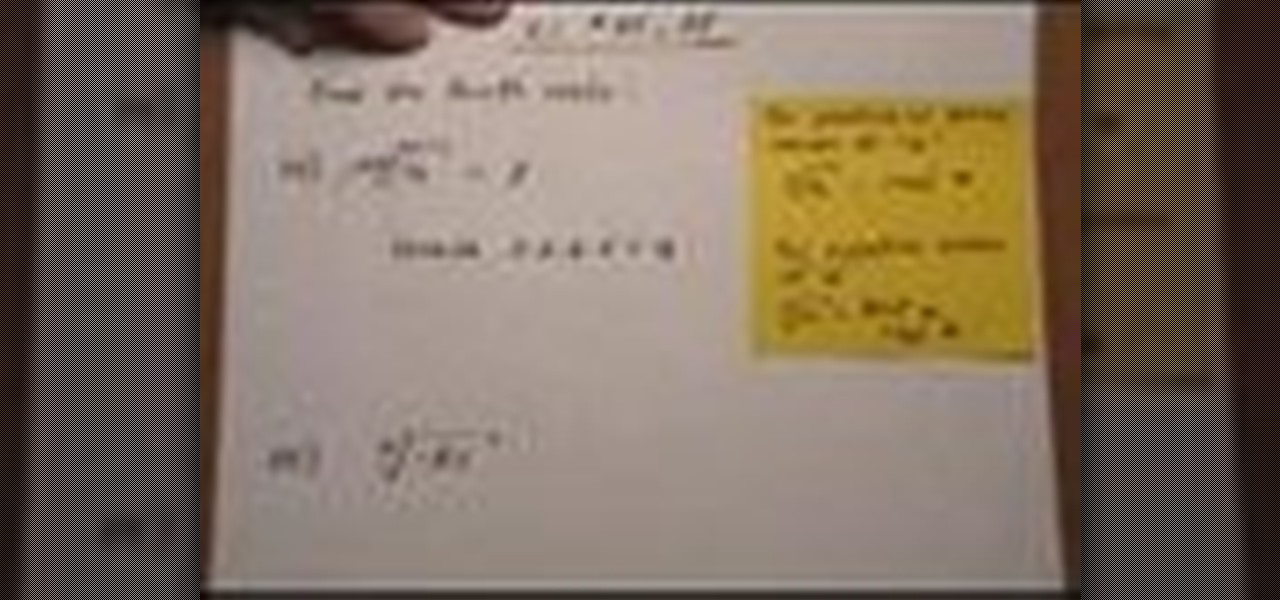
How To: Simplify fourth roots
In this video the instructor shows how to find out the fourth roots of a number. The properties of fourth root says that for any positive number of a, its fourth roots are real. And for any negative value a, its fourth roots are not real. So split the number inside the fourth root as the product of two perfect squares and then cancel out the power with the fourth root giving its roots. As the fourth roots of a positive number are real, the answer you get is correct. But you cannot find out th...
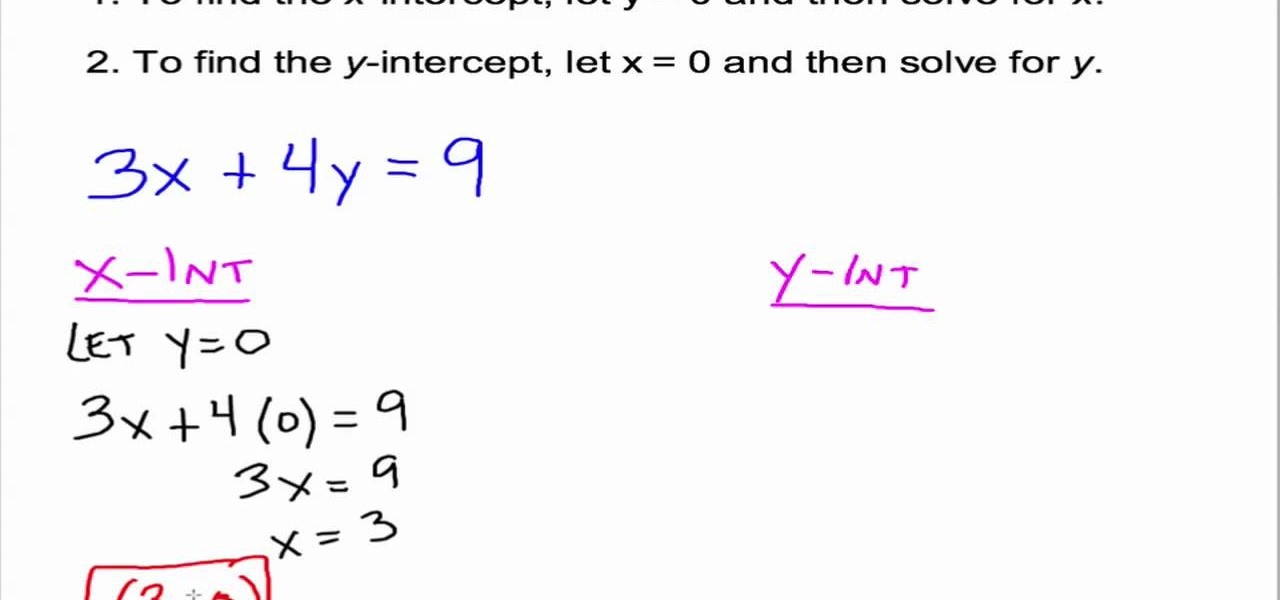
How To: Use and find x & y-intercepts in algebra
A straight line can be represented in the form of a liner equation containing two variables x and y. When the equation is graphed on a pair of coordinate axes, the line passes cut through the axes in two points. The point where the line cuts the x-axes is called as its x coordinate and the point where the line cuts the y-axes is called as its y coordinate. In this way a line has x-intercept and y-intercept. The x-intercept of a line lies on x axes and is in the form (a,0). Similarly the y-int...

How To: Find the Percent Given Two Numbers
Whether you're shopping for deals, need help with a little math, or any number of other occasions, it's a valuable skill to know how to quickly figure out a percentage given two numbers.

How To: Divide small numbers by big numbers
This is a mathematical educational video on how to divide a small number by a larger number. You are aware that it is easy to divide a larger number by a small number. For example, if you want to divide 379 by 9 it is easy to do so. But if you have to divide 9 by 379 it is a bit difficult. You have to add a zero and see if you can divide. You need to add one more zero so that you can divide 900 by 379. But you should know that the answer would start like this 0.0 as we have added 2 zeros alre...

How To: Calculate the area of a parallelogram
Calculating The Area Of A Parallelogram A parallelogram is a 4-sided shape formed by two pairs of parallel lines. Opposite sides are equal in length and opposite angles are equal in measure. To find the area of a parallelogram, multiply the base by the height. The formula is:
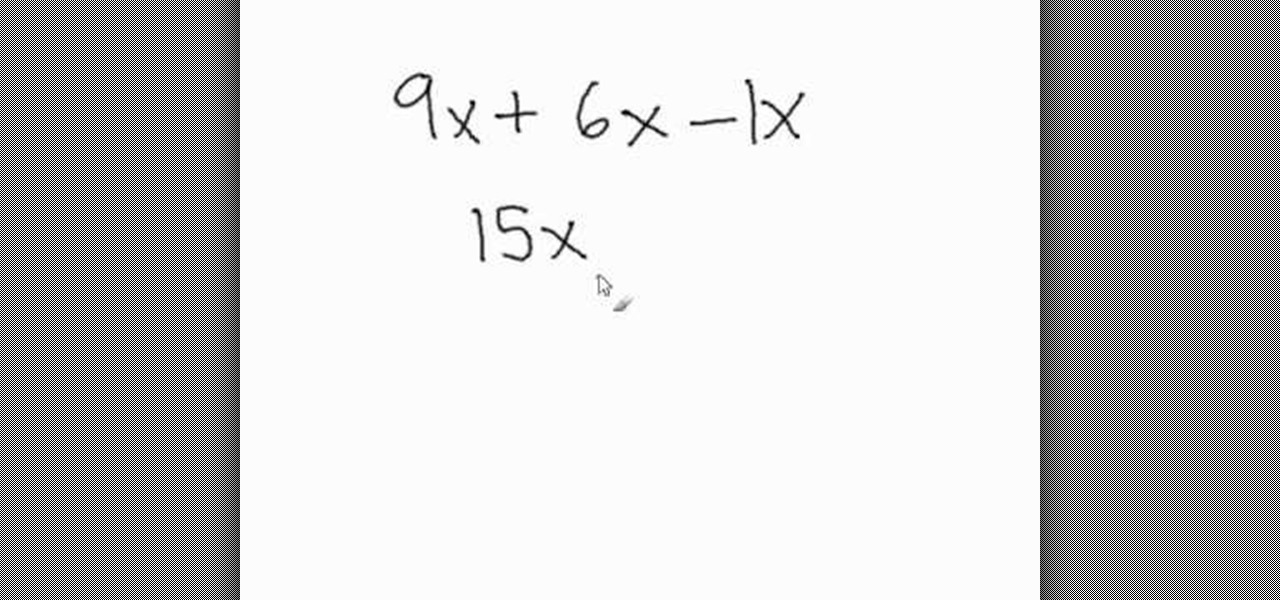
How To: Add and subtract variables
Math Problem Generator gives a video about how to add and subtract variables. All you have to do is combine the coefficient, which is the number that comes before the variable. The numbers are added or subtracted but the variable remains the same. In the video, the example given is 9x + 6x - x. First you add 9x + 6x, giving you 15x. The equation is now 15x - x. If a variable has no number written in front of it, that means the value is 1. So the equation is 15x - 1x and that is equal to 14x.
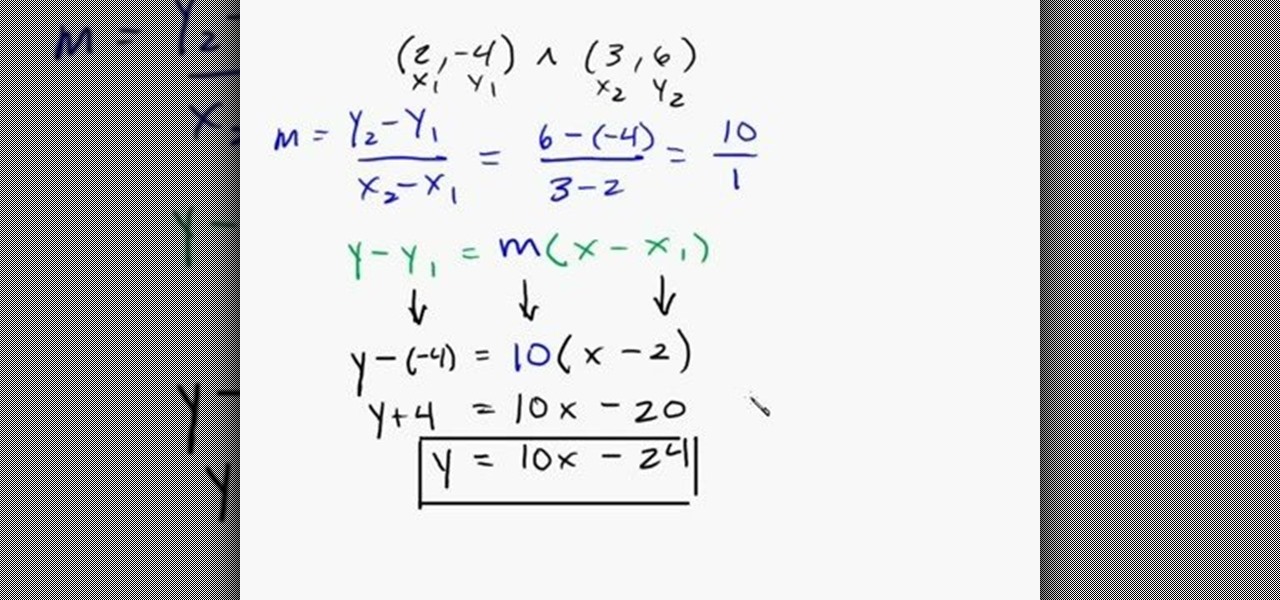
How To: Find the equation of a line given 2 points
This tutorial teaches you how to find a mathematical equation of a line given 2 points that exists on the line. The tutorial starts off with 2 points labeled (2,-4) and (3,6). The first step is to determine the slope of the line using the formula given in the tutorial in blue. The slope is then solved as 'm'. Plug the slope and the points into another formula given in green. The tutorial maker provides a tip that one can use x1 and y1 or x2 and y2, however, it must be consistent. After, solve...
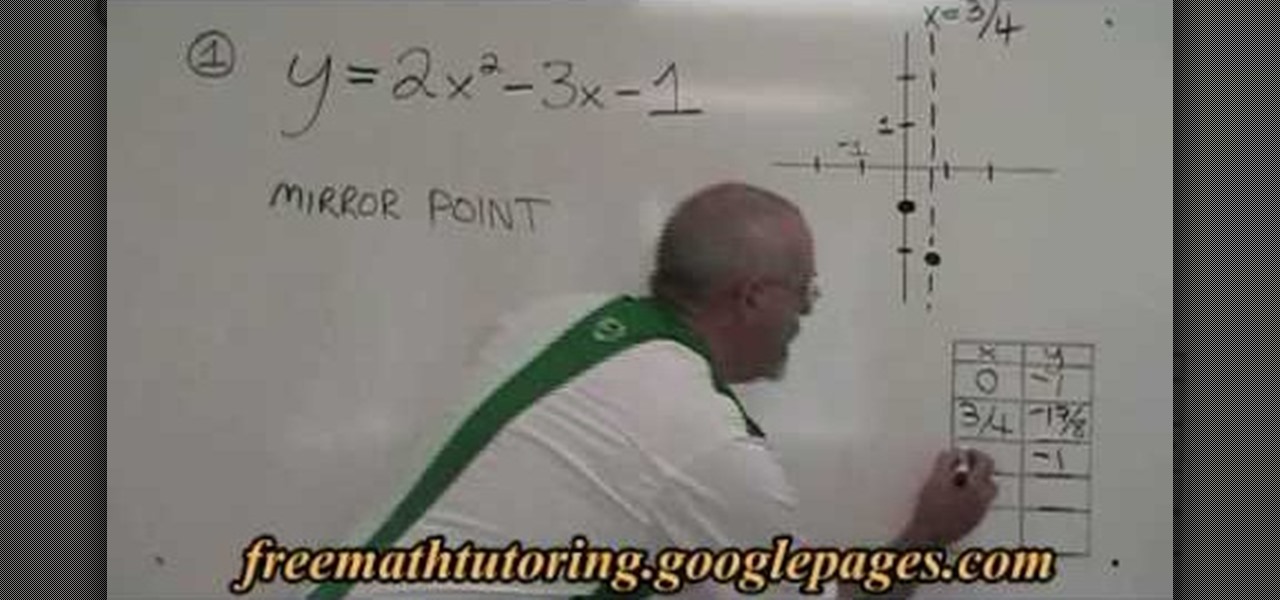
Use the quadratic equation: finding the mirror point
In this video the tutor shows how to find the mirror point using a quadratic equation. He says that to graph a parabola you need to find the mirror point symmetrical to the Y-intercept. Now he explains how to find a mirror point using an example with sample values. He begins with saying that the Y-coordinate of the mirror point is same as the Y-coordinate of the Y-intercept. Now you have to find the x coordinate of the mirror point which he shows that it is double the x-coordinate of the vert...

How To: Find the area of a triangle when given 2 sides & angle
This video shows you how to easily find the area of a triangle when you know the length of 2 sides and the angle between them. The first thing you have to do is mark the sides of the triangle by a, b, c, where a is the side between A and B, b is the side between B and C and c is the side between C and A. If you know 2 of these 3 sides an you know the angle between them you can find the area of the triangle very simple: Area= (a x b x sin c)/2, where a, b are the two sides and c is the angle b...

How To: Change Fahrenheit to Celsius
This video is a tutorial on how to convert Celsius to Fahrenheit. The title of the film says it will teach you how to convert Fahrenheit to Celsius, but it does not. It does just the opposite. The video begins by comparing Fahrenheit and Celsius. He points out that Fahrenheit measures water to freeze at 32 and water to boil at 212. Celsius measures water to freeze at 0 and water to boil at 100. To convert Celsius to Fahrenheit, multiply the Celsius temperature by 1.8 and add 32. Many countrie...
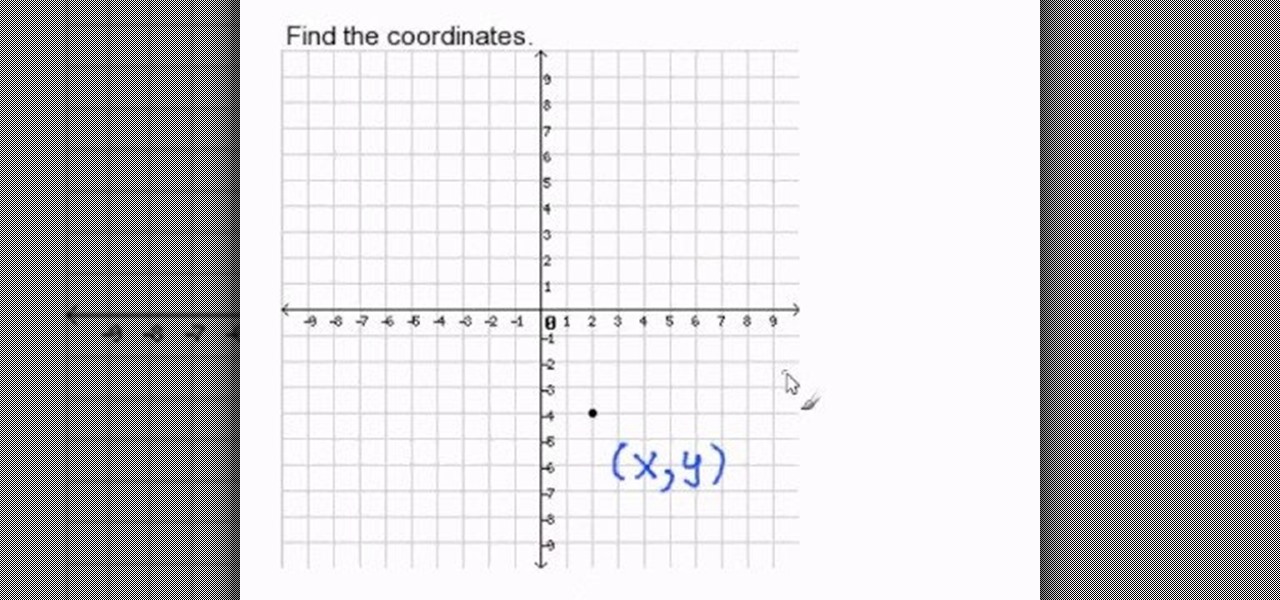
How To: Find coordinates (ordered pair)
This video tells you how to identify the coordinates of an ordered pair from a given point. An ordered pair is denoted by (x, y). Normally a graph has two axis, the x and the y axis. Consider a point on the graph. It will surely be the intersection of two values and one value will be from the x axis and the other valve from the y axis. Find the two corresponding values of the given intersection point. The value on the x axis will be x and the value from the y axis will be y. Now you have got ...

How To: Subtract mixed numbers with borrowing
This video teaches you to subtract mixed numbers with borrowing. Consider 2 mixed numbers. For example 8 and 2/7 and the other 5 and 4/5.You have to subtract 5 and 4/5 from 8 and 2/7. First you have to convert the fractions to their common denominator. To equate the denominators of these two fractions you have to multiply the first denominator with the numerator and the denominator of the second fraction and also multiply the numerator and denominator of the first fraction with the denominato...
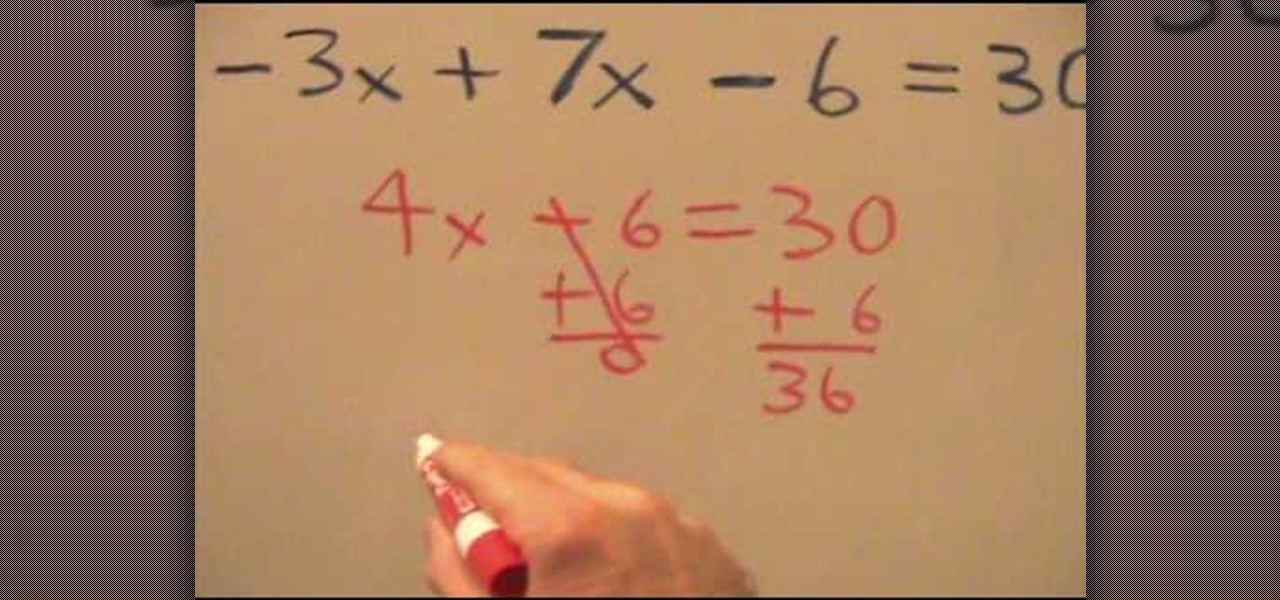
How To: Solve for X (advanced)
The video describes how to find 'x' in the algebraic equation -3x + 7x - 6 = 30
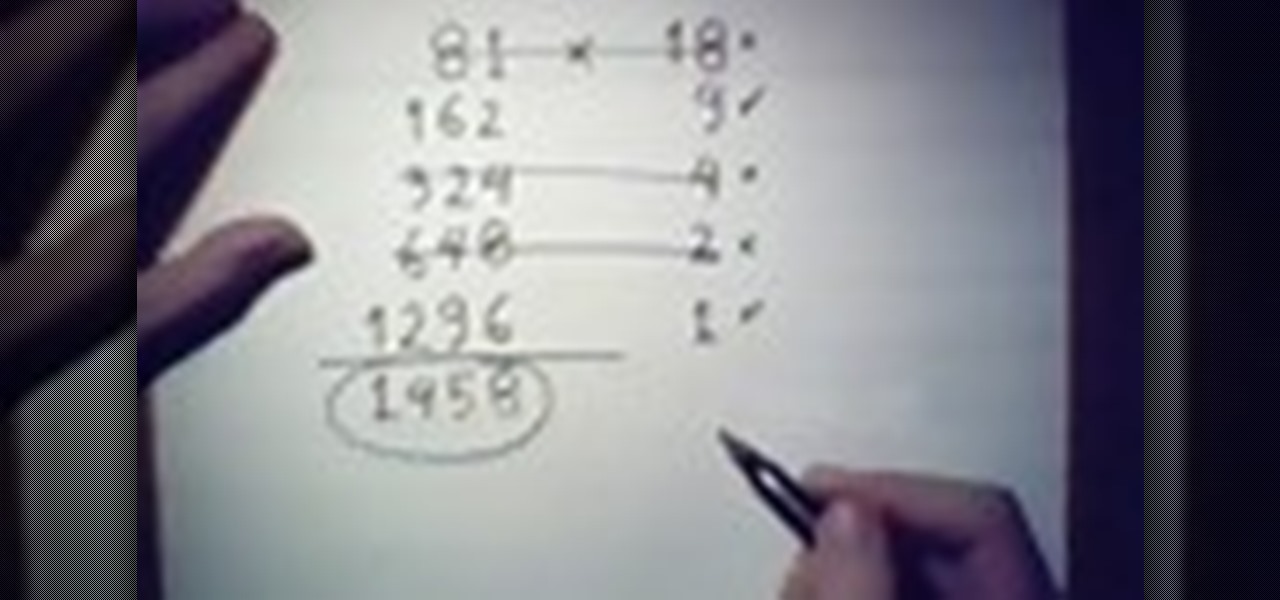
How To: Turn multiplication into sum
This is a handy math trick that show you how to turn a multiplication problem into a sum problem. An unusual way to perform a multiplication. You only need to be able to sum, halve and double numbers. It is not efficient, but it is rather intriguing and fun.
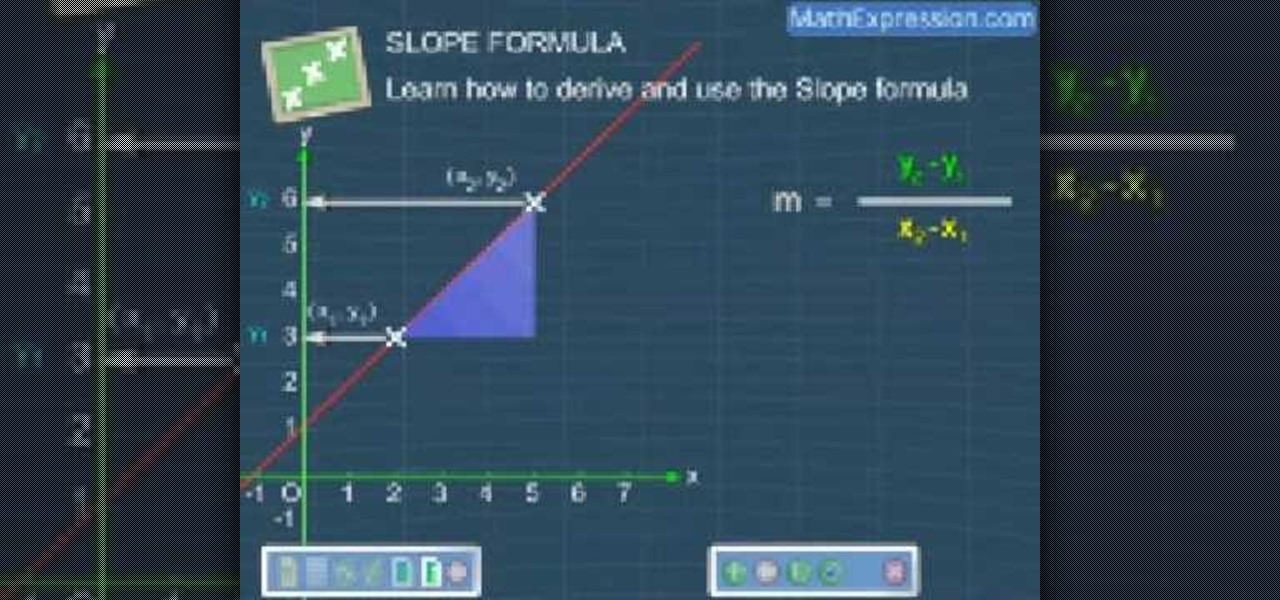
How To: Derive and use the slope formula
In this video, we learn how to derive and use the slop formula. The slope of a line is equal to change in y divided by the change in x. First, put the first point on the coordinate point. Then, represent the X and Y by X1 and Y1. Then, put the second point on the plane, representing the coordinates with X2 and Y2. Now, with these two points, draw a straight line and derive the formula from here. The change in X will be from X1 to X2. Now, replace that with the change in X and do the same for ...

How To: Find the circumference of a circle
In this video tutorial, viewers learn how to find the circumference of a circle. This task is very easy, simple and fast to do. To find the circumference of a circle, multiple Pi with the diameter of the circle. The value of Pi is 3.14. The diameter is equal to 2 times the radius. Simply multiply the radius by 2 to find he diameter. The diameter is the straight horizontal line in the center of a circle. This video provides a demonstration for viewers to easily understand and follow along. Thi...

How To: Solve rate problems in algebra
From Ramanujan to calculus co-creator Gottfried Leibniz, many of the world's best and brightest mathematical minds have belonged to autodidacts. And, thanks to the Internet, it's easier than ever to follow in their footsteps (or just finish your homework or study for that next big test). With this installment from Internet pedagogical superstar Salman Khan's series of free math tutorials, you'll learn how to work with and solve rate problems in algebra using the distance formula.
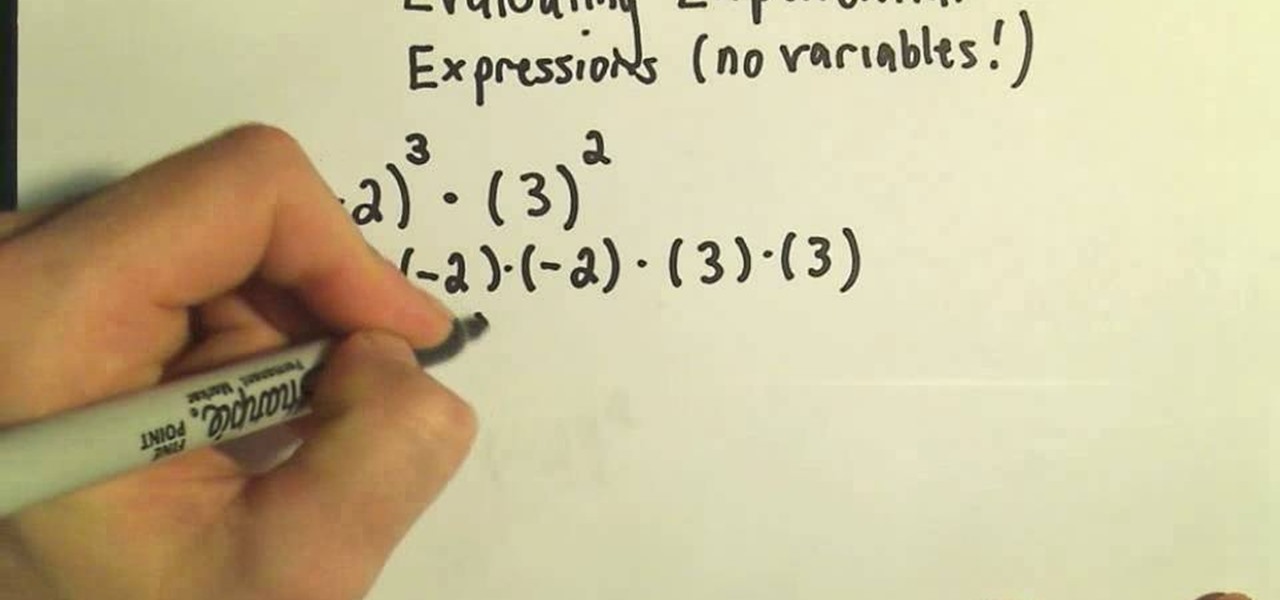
How To: Evaluate exponential expressions in algebra
Need some help figuring out how to solve exponential expressions in algebra? See how it's done with this free video algebra lesson. From Ramanujan to calculus co-creator Gottfried Leibniz, many of the world's best and brightest mathematical minds have belonged to autodidacts. And, thanks to the Internet, it's easier than ever to follow in their footsteps (or just finish your homework or study for that next big test).
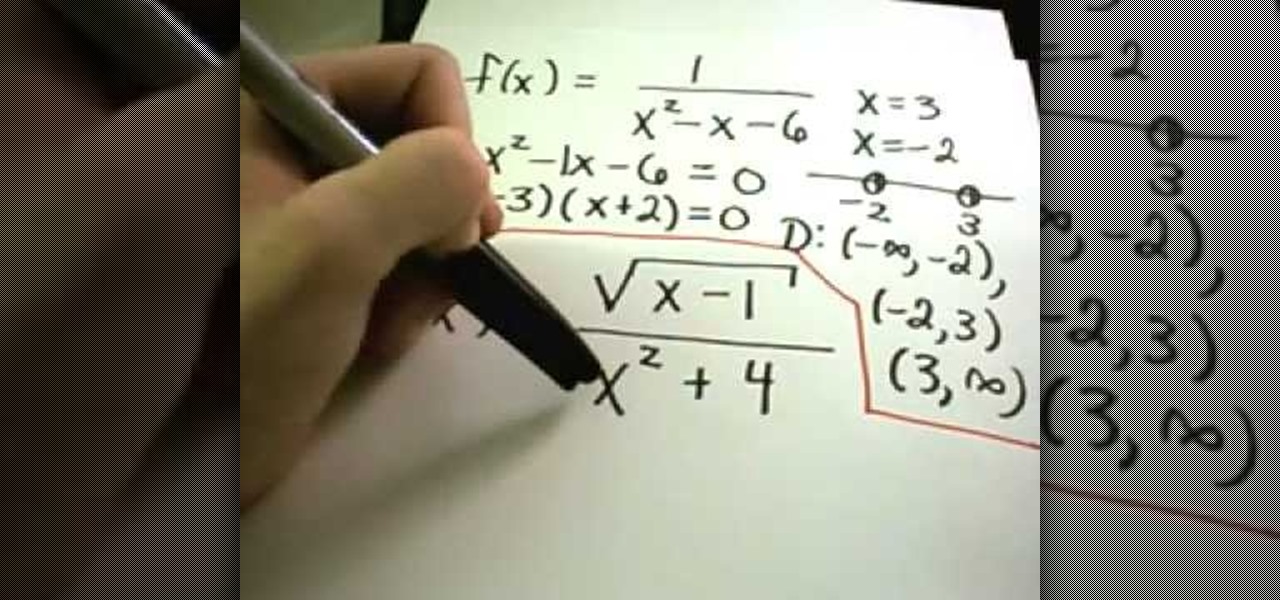
How To: Find the domain of a function without graphing
Want to find the domain of a function without graphing it? Learn how with this free video lesson. From Ramanujan to calculus co-creator Gottfried Leibniz, many of the world's best and brightest mathematical minds have belonged to autodidacts. And, thanks to the Internet, it's easier than ever to follow in their footsteps (or just finish your homework or study for that next big test).

How To: Cancel out in basic algebra
This video gives you brief tutorial on simplifying expressions, or canceling out common factors. He starts out by answering the question "What is canceling?" and demonstrates a basic example. You find the greatest common factor between the numerator and denominator, which you then divide both by. This can also be done if you have variables in your fraction. He then shows it can be done the same way if you have binomials in your fractions. However, you must be careful that the denominator does...

How To: Multiple and divide rational expressions
This video walks you through the steps of multiply and divide rational expressions. This excellent video shows you a clean board, with the instructors voice showing exactly what to do. Don't fret, any question you may have, will be answered. Watching this video will make you feel like your back in the classroom but rather comfortably from your home.

How To: Find the area and volume of prisms
This helpful video gives simple step by step instructions on how to find area and volume of prisms. To find the area of a prism you must first find the area of the base, it may be rectangular, triangular, or otherwise. You must then multiply the area of the base times the height. Examples of all types of scenarios are given to better explain the method of finding the area. To find the volume of a triangular prism you must first find the area of the base. The next step is multiplying the area ...
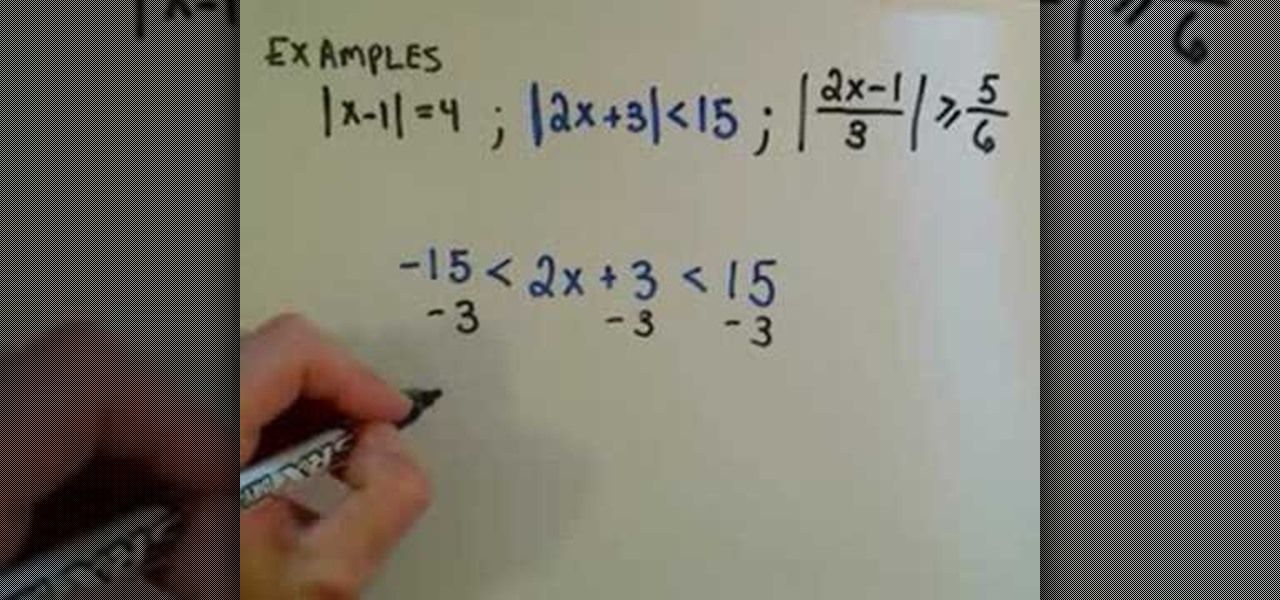
How To: Solve linear absolute value equations & inequalities
In this video the instructor shows how to solve linear absolute value equations and inequalities. You need to remember basic rules to solve these kind of problems. When the absolute value is equal to a number then the real value of it is equal to either the positive value of that number or negative value of that number. In case the absolute value is less than or equal to a number, then the real value lies in between the positive and negative values of that number. In the third case, if the ab...
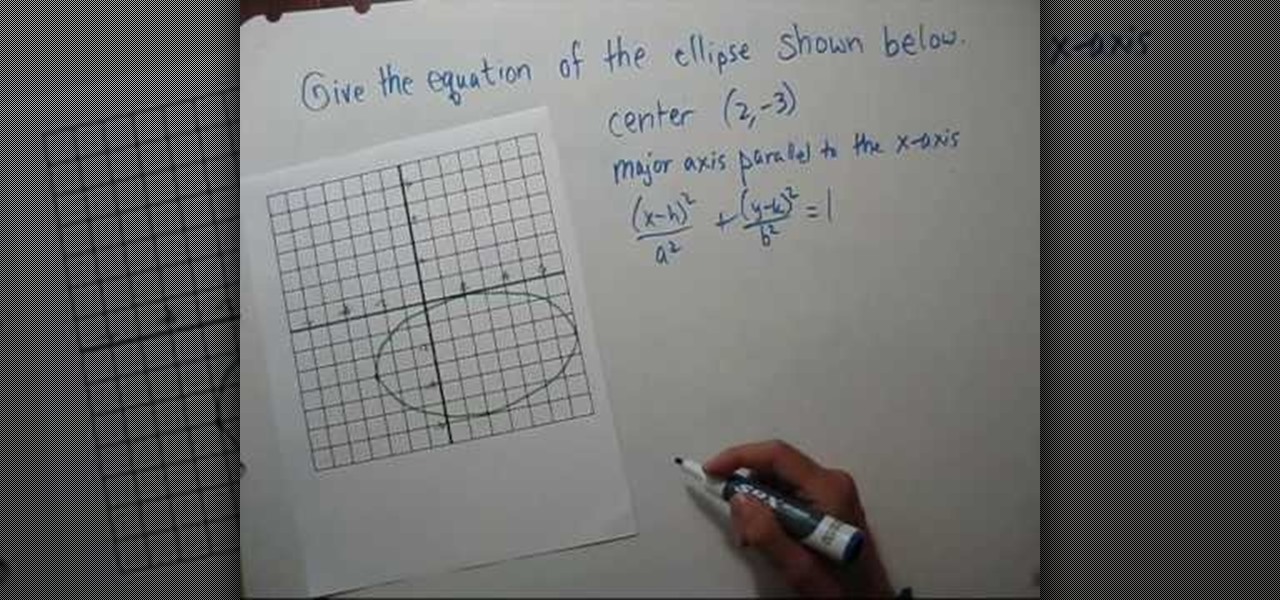
How To: Find the equation of an ellipse given a graph
Notes College Algebra teaches you how to find the equation of an ellipse given a graph. You first want to find out the center of the ellipse, which in the video is (2, -3). The major axis is parallel to the X axis. The equation is (x - h) squared/a squared plus (y - k) squared/a squared equals 1. A is the distance from the center to either of the vertices, which is 5 over here. B is the distance from the center to the top or bottom of the ellipse, which is 3. You then use these values to find...
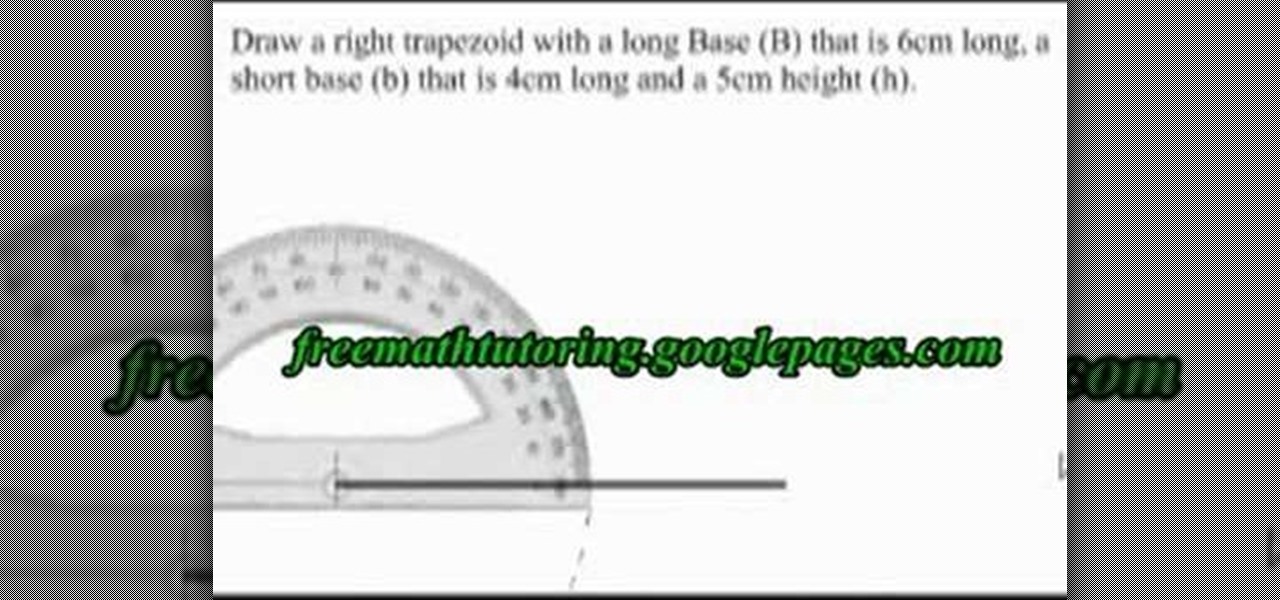
How To: Draw a right trapezoid in Geometry
Watch this video to learn how to draw a right trapezoid using given specifications for lengths of sides. A right trapezoid is a four-sided shape with two right angles and two parallel sides. First, draw the long base. Then draw a 90 degree angle at one end of the base, using a protractor. Mark the angle to show it is 90 degrees. Then draw another 90 degree angle at the top. This is the first video in a set--to finish learning you must watch the next segment. If you watch these videos you will...
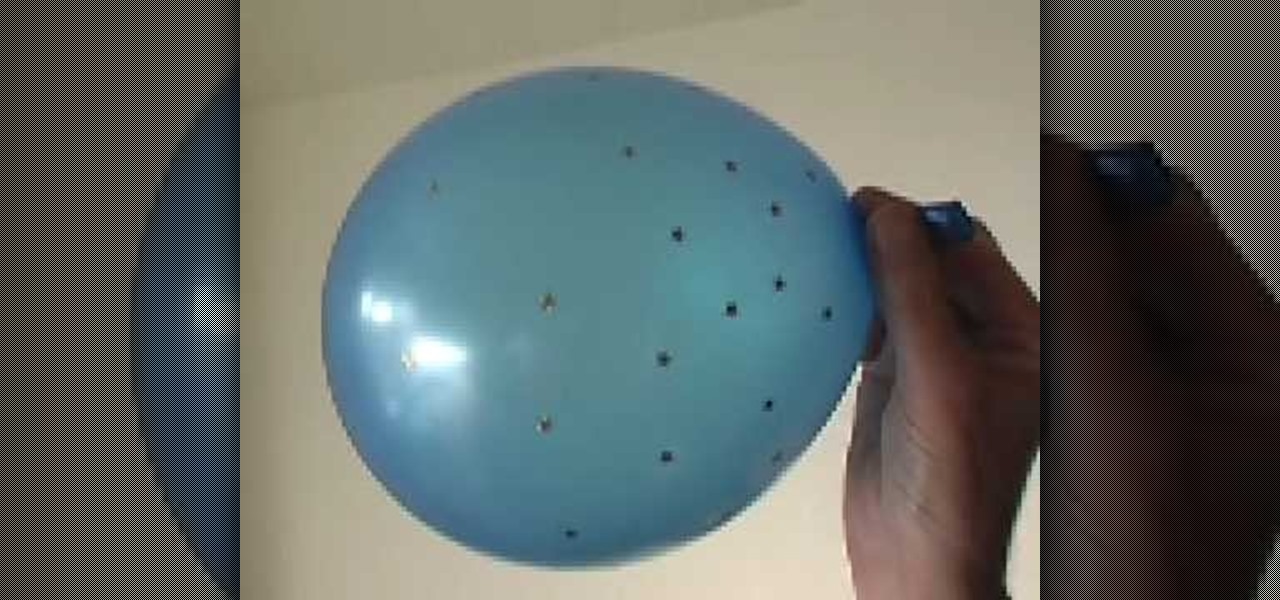
How To: Calculate the age of the universe w/ Hubble's constant
This is a great instructional video on how to calculate the age of Universe from Hubble's constant. The speed the galaxy moves away from us is directly proportional to the distance from us. Now think of big bang theory. Hubble's constant is equal to velocity over distance. 1 over Hubble's constant is equal to distance over velocity that is equal to time. Time equals to 1over 71. If you change it into all the same units words it is one over 71000 or 3.09x 10 to the power of 22. It is 3.09x10 t...
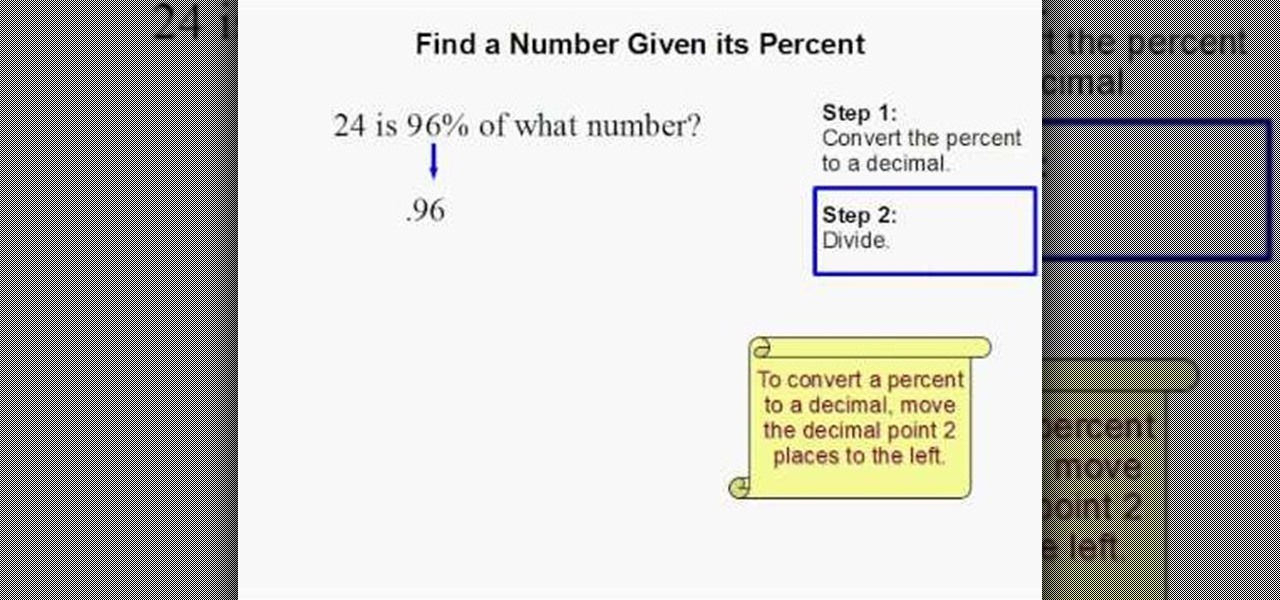
How To: Find a number given Its percent
This how-to video is about how to find a number when its percent is given. This video is really helpful and effective in finding the number when the percent is given, the following steps are explained in the video to find the number when its percent is given:



